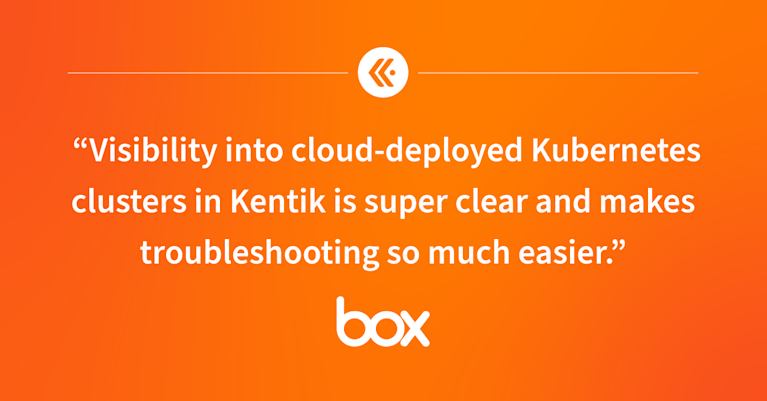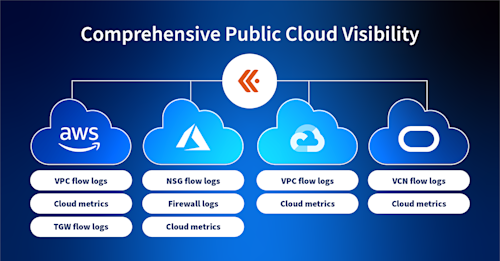Infrastructure Modernization Means a Multi-cloud Future


Summary
Today, 84% of enterprises have reportedly embraced a multi-cloud strategy, lured in by the promise of improved agility, resilience, and innovation. But that multi-cloud adoption comes with challenges. Read on to learn more about how a multi-cloud strategy paired with observability can simplify that complexity.
Let’s just face the obvious: The future is multi-cloud.
According to the latest Gartner report, “Predicts 2024—Multicloud and Sustainability Drive Modernization,” organizations are increasingly adopting multi-cloud strategies to optimize their infrastructure and ensure agility, resilience, and cost efficiency. This shift towards multi-cloud is not just a trend but a strategic move that promises a (hopefully) brighter future. But what does this mean for enterprises, and how can they navigate this complex landscape?
Multi-cloud: The new normal
Embracing a multi-cloud strategy offers a myriad of benefits, including enhanced agility, improved resilience, and greater innovation. This shift, as highlighted by the Gartner report, is driven by the need to avoid vendor lock-in, enhance disaster recovery capabilities, and optimize costs by leveraging the best services each cloud provider offers. However, managing multiple cloud environments can be a Herculean task, fraught with data integration, security, and visibility challenges.
This complexity isn’t just about juggling different technologies. It’s also about managing relationships with multiple vendors, each with its own billing systems, support processes, and service levels. It’s like running a restaurant where every dish comes from a different kitchen with its own head chef and unique recipe.
The challenges of multi-cloud
Data integration and management: Integrating data across different cloud platforms can be messy. Each provider has its own set of APIs, data formats, and services, making it difficult to achieve seamless data flow. Native tools often fall short of providing a unified view across disparate environments, creating blind spots and inefficiencies. Gartner notes that traditional monitoring tools, often the first choice, fail to meet the comprehensive needs of a multi-cloud environment.
Security and compliance: Ensuring consistent security policies across multiple clouds is a nightmare. Different clouds have different security protocols, and maintaining compliance with industry regulations across these diverse environments is daunting. Native tools often lack the advanced features needed for comprehensive security and compliance management in a multi-cloud setup.
Visibility and monitoring: Keeping an eye on performance, usage, and costs across multiple clouds is difficult. Traditional monitoring tools and even cloud-native tools from the providers themselves can fall short, leading to blind spots and inefficiencies. Native tools often don’t offer the depth or breadth required for effective multi-cloud monitoring, leaving enterprises without a clear view of the granular metrics and data inside each cloud environment.
Practical implications for enterprises
Adopting a multi-cloud strategy isn’t just about technology; it’s about transforming how your business operates. Let’s lay out some practical implications:
Enhanced agility: Multi-cloud environments enable you to adapt quickly to changing business needs. Whether scaling up resources during peak times or experimenting with new services, the flexibility of multi-cloud allows you to respond faster to the demands of the market and your customers.
Improved resilience: By distributing your workloads across multiple clouds, you reduce the risk of downtime. If one provider experiences an outage, your services can continue running on another, ensuring business continuity and the ability to meet SLAs confidently.
Greater innovation: Access to diverse tools and services across different cloud platforms fosters innovation. You can leverage each provider’s unique strengths to develop cutting-edge solutions that drive your business forward.
The subtle pitfalls of native tools
Many enterprises initially rely on cloud-native tools provided by their cloud service providers (CSPs). While these tools are tailored to their specific environments, they often lack the capability to integrate and manage multi-cloud setups seamlessly. Here’s why relying solely on native tools can be problematic:
Limited cross-platform integration: Native tools are designed to work best within their own ecosystems. When you bring another cloud provider into the mix, things can get tricky. Imagine trying to fit a square peg in a round hole—it’s not impossible, but it’s not ideal. For example, Gartner’s research shows that CSP-native tools often do not support the broad integration needs of multi-cloud environments.
Inconsistent security policies: Each CSP has its own security protocols, and aligning these across multiple platforms can be daunting. Native tools rarely offer the flexibility to enforce consistent security policies across all environments.
Fragmented visibility: Monitoring tools from different CSPs might not provide a unified view of your entire infrastructure. This fragmentation can lead to blind spots and make it difficult to understand your system’s health and performance comprehensively.
Evidence and insights from industry leaders
The shift towards multi-cloud is not just a trend but a strategic move backed by substantial research and real-world applications. For instance, a study by Flexera found that 84% of enterprises have a multi-cloud strategy, with 58% planning to use hybrid cloud. This shift is driven by the need to optimize costs, improve business agility, and leverage the best-of-breed services from different providers.
Moreover, Gartner’s analysis indicates that enterprises are increasingly seeking tools that offer better integration, visibility, and security than what native tools can provide. The need for third-party solutions to bridge the gaps left by CSP-native tools is becoming more critical.
The role of observability
Observability tools are becoming essential in managing the complexities of multi-cloud environments. These tools provide comprehensive insights into your cloud infrastructure’s performance, security, and costs, enabling you to make informed decisions. Let’s take a look at some of the key benefits of observability.
Comprehensive insights: Observability tools provide a holistic view of your entire cloud environment, enabling you to monitor performance, detect anomalies, and optimize resources. Unlike native tools, these solutions offer a unified view across all your clouds, ensuring you don’t miss any critical data points.
Enhanced security: Observability can enforce consistent security policies across all your clouds. These tools integrate with leading security solutions to provide continuous monitoring and threat detection, reducing the risk of breaches and compliance issues.
Cost optimization: Observability tools help you track usage and spending across multiple clouds, identify underutilized resources, and optimize your cloud spending. This ensures you’re not overspending on cloud resources and can allocate your budget more efficiently.
Real-world examples
Several companies across various industries have successfully implemented multi-cloud strategies, leveraging advanced observability tools to overcome the inherent challenges. One global technology firm faced significant challenges with its legacy network monitoring solutions. These tools were not scalable and did not provide visibility into its hybrid cloud infrastructure. Adopting an advanced network observability platform allowed it to consolidate its network tools, reduce costs, and improve efficiency, ensuring a future-ready network.
Another major enterprise in the energy sector struggled with segregated and rapidly changing infrastructure driven by evolving company strategies and regulatory pressures. An advanced observability platform enabled them to streamline their network operations, enforce consistent security policies, and gain comprehensive visibility across their multi-cloud environment, significantly enhancing their operational efficiency and agility—timely for an industry going through global disruption.
Kentik’s role in multi-cloud modernization
The Kentik network observability platform offers comprehensive visibility and control, integrating telemetry data from all your cloud environments into a single pane of glass. You can monitor performance, detect anomalies, measure traffic, and gain insights across your entire infrastructure without jumping between different tools. Our platform ensures your security policies are consistently enforced and helps you optimize costs by tracking usage and spending across multiple clouds.
Check out this recent demo to learn more about Kentik’s multi-cloud observability.


